The 15 Best Golf Resorts in the United States

In the past 20 years, golf has seemed determined to prove that old Kevin Costner movie right. Golf resorts have popped up in places where tourists rarely dream of going, but the proprietors have built fantastic courses—unique, challenging, fun, timeless—and sure enough, golfers have packed up their sticks and come. In droves.
That is how a list of great resort courses ends up highlighting locations on both edges of Oregon, the windy coast of Wisconsin, the Nebraska prairie, the Missouri wilderness and the flat, landlocked expanse of central Florida. Even the perennial favorites on the list are in places that would be little more than dots on the map were it not for the game. Would anyone besides the locals have any frame of reference for Pebble Beach or Pinehurst without golf? Kiawah Island?
More from Robb Report
In many cases, the more recent courses hew to a new—or maybe renewed—aesthetic that has swept game. Such layouts are a little rougher around the edges, more shaped from the existing land rather than manufactured and manicured. This connection to the landscape provides a uniqueness that persists even among courses built by the same architects; the designers are adjusting to the terrain rather than bending it to their will.
Along with multiple distinct layouts, these resorts often include putting courses and short courses that are built with one aim: pure joy. Even some of the traditional tracks have added such features or undergone refurbishing that aligns them more with current tastes. Of course, many of them never strayed far from that sensibility to start with, which is what made each of them, dare we say, a field of dreams.
Pebble Beach, California
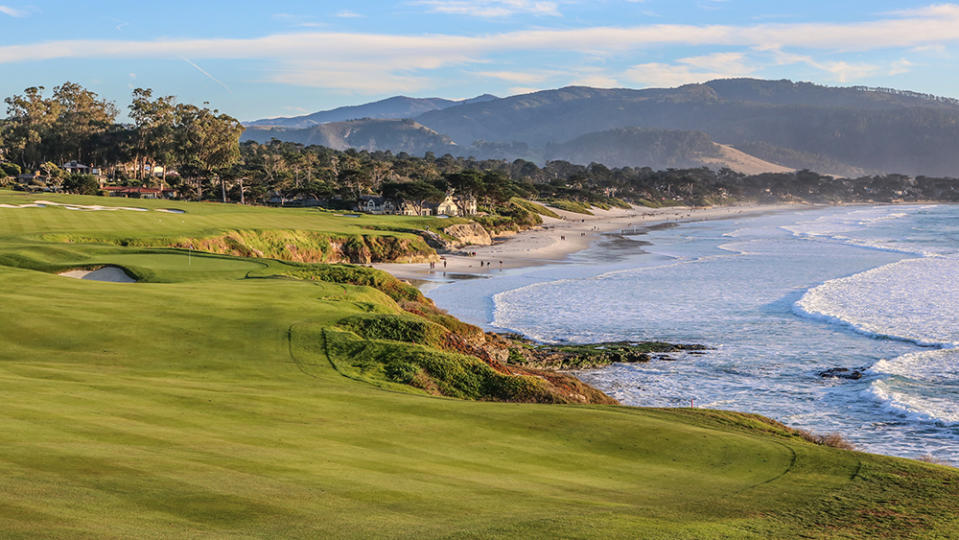
Courtesy of Pebble Beach
Pebble Beach is fun. That often gets lost in the blather about views and US Open history, but the course’s generous fairways mean that you’re usually in play off the tee, leaving you with a series of engaging second-shot challenges and scrambling tests around the notoriously small greens. You may not record a great score, but you’ll walk off feeling happier than you would’ve on a course that tends to take par out of play after one swing. Of course, a stay at Pebble Beach Resort provides access to tracks beyond the namesake, including Spyglass Hill, Spanish Bay and Del Monte, each with charms of its own. And earlier this year Pebble introduced a Tiger Woods redesign of the Hay, a sporty 9-hole “short course” that even beginners can enjoy. (The holes range from 47 to 106 yards.) It includes an undulating 20,000-square-foot putting course that can eat up half a day itself. You see, fun. Oh, and yes, it still has those dramatic cliffs and stunning ocean views.
Bandon Dunes, Oregon
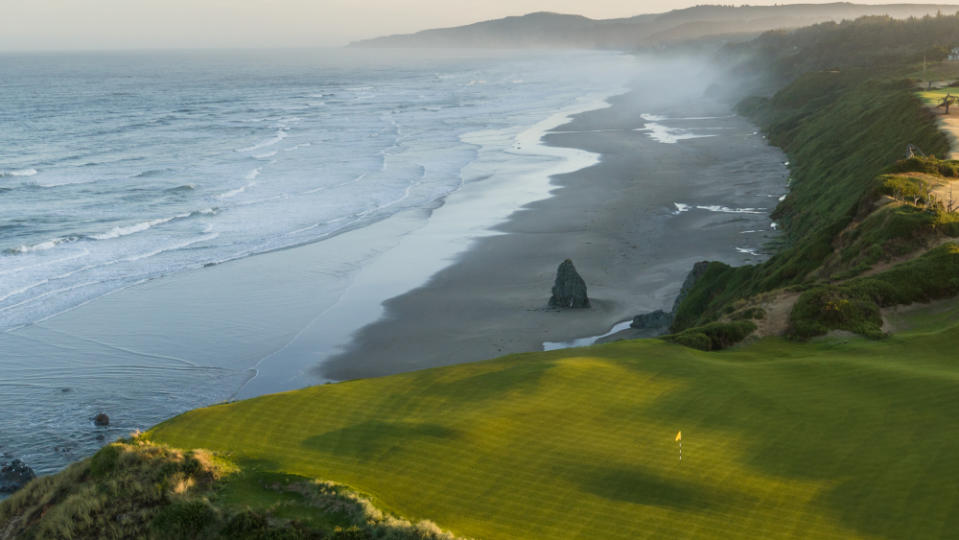
Courtesy of Brandon Dunes
This golf mecca on the southwest coast of Oregon is younger than Google but feels ancient because it taps into the roots of the game. Owner Mike Keiser brought in a handful of the most creative designers working today and gave them free reign on prime coastal real estate, resulting in a quintet of wild, shaggy, wind-swept courses that breaks rules and provides an antidote to the overly manicured, tree-lined tracks that represent so much of American golf. Bandon’s courses—Bandon Dunes, Pacific Dunes, Bandon Trails, Old Macdonald, Sheep Ranch—will bring you face to face with stacked sod bunkers, rolling dunes, actual gorse, waving native grasses and unique routings. Risk-reward abounds as does dust-in-your-eye beauty. At Bandon Dunes the shot values are high, but the greater difficulties may be how hard it is to get there and deciding which course is your favorite.
Streamsong, Florida
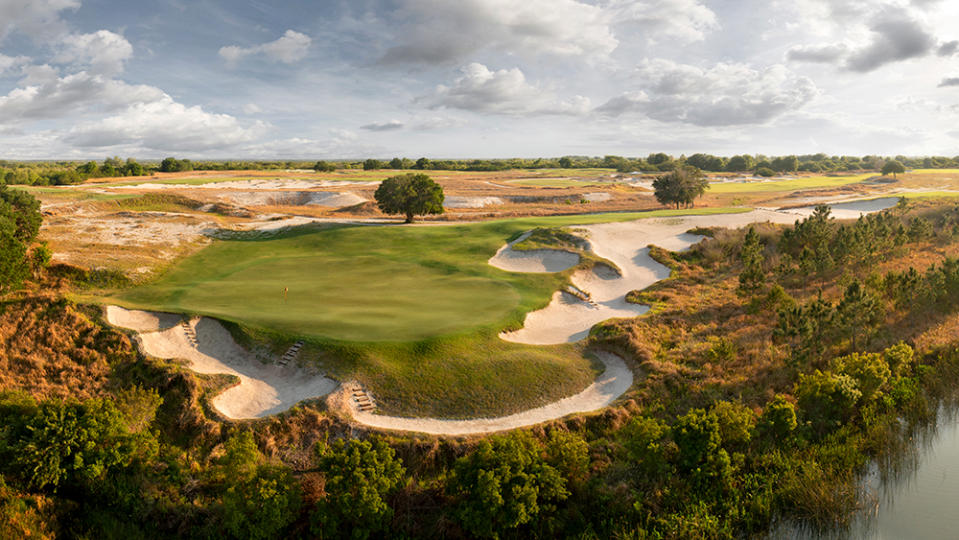
Photo: Bill Hornstein
Central Florida screams flat and boring, unless the landscape has been strip mined for phosphate, leaving behind hilly, barren, heavily contoured terrain perfect for golf. Welcome to Streamsong, where the Old Course meets the surface of Mars. Like much of Bandon Dunes, Streamsong features the design work of Tom Doak (Blue course) and the team of Bill Coore and Ben Crenshaw (Red), with Gil Hanse (Black) added to the mix. They’ve created three distinct experiences, from the Red, a firm and fast snake through dunes and ponds, to the Blue’s dramatic elevation changes and frequent water hazards to the Black’s wide rolling layout scattered with scrubby white dunes. There’s very little that’s flat and nothing boring.
The Prairie Club, Nebraska
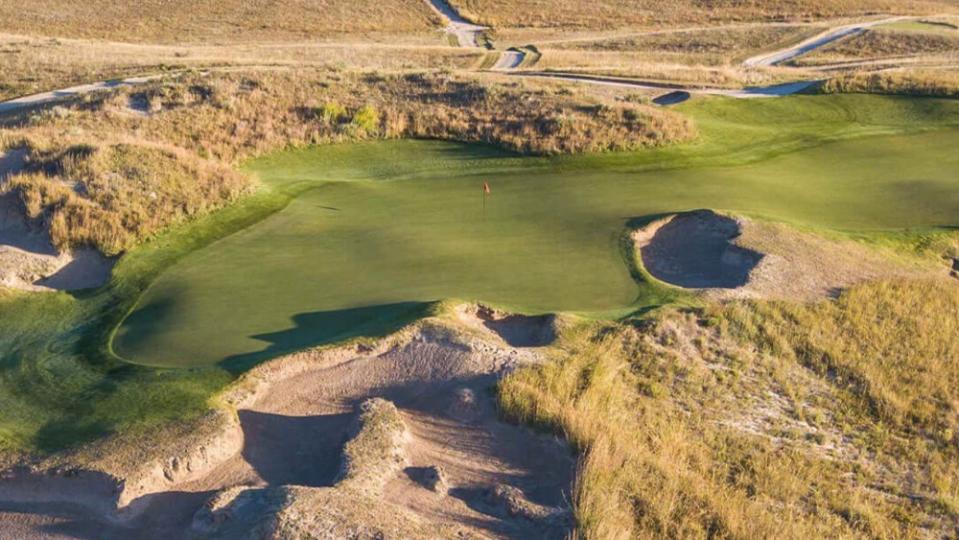
The founders of the Prairie Club promised to bring golf back to the time before bulldozers, when holes were found more than they were shaped. The resort has since stumbled upon two wind-carved 18-hole courses and a 10-hole short course. The Dunes course undulates over rolling, treeless prairie with wide fairways and tough greens, while the Pines course mixes the prairie experience with tree-lined parkland golf on holes that run along the edge of a river gorge. The short Horse course is so named because it has no tee boxes, relying instead on the winner of each previous hole to call his shot (or at least his starting point) in challenge matches that recall lunch-time recess basketball showdowns of the same name. Top that.
Pinehurst Resort, North Carolina
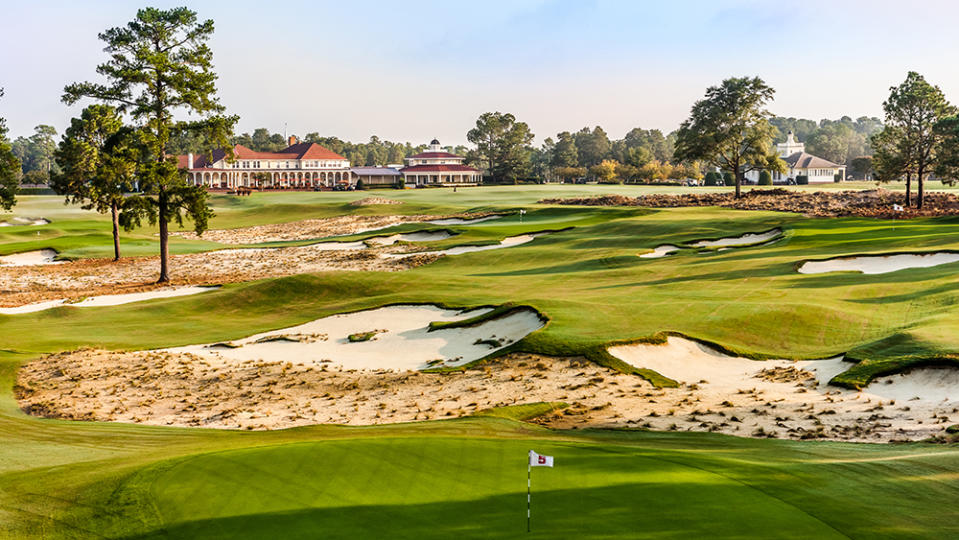
Courtesy of Pinehurst
Pinehurst has long been defined by its most famous track, the No. 2 course, which was originally designed by Donald Ross and treated to a pleasantly rugged restoration by Coore & Crenshaw in 2013. That’s why Gil Hanse’s dramatic redesign of No. 4 in 2017 was so important: It reminded everyone that there’s more to Pinehurst than No. 2, and much of it worthy of a visit to the Carolina sandhills. In fact, there are nine 18-hole courses and a 9-hole short course, and they feature the work of some of the biggest names—even if they’re not currently en vogue—in course design, including Jack Nicklaus, Rees Jones and Tom Fazio. That’s why a trip the “epicenter of American golf” allows you to drop names as well as putts.
Sea Pines Resort, South Carolina
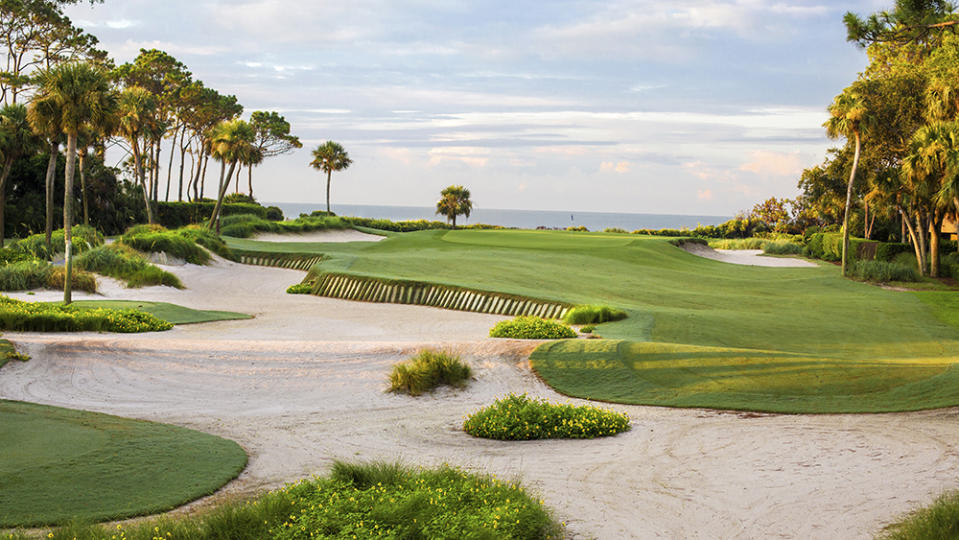
Courtesy of Sea Pines
A visit to family-friendly Sea Pines will quickly explain why so many players on the PGA Tour choose to build out some R&R there after the resort’s Harbour Town Golf Links hosts the annual RBC Heritage tournament each April. Golfers who love the challenge of shaping shots will be in heaven on the Pete Dye–designed course; but they should also tee up on the resort’s two other layouts. Heron Point—another Pete Dye design—delivers similar signature features as Harbour Town, albeit in a slightly more forgiving package; while Atlantic Dunes—a comprehensive redesign by Mark and Davis Love III—mixes difficulty with helpful assistance for golfers who are able to think their way around a course.
Sea Island Resort, Georgia
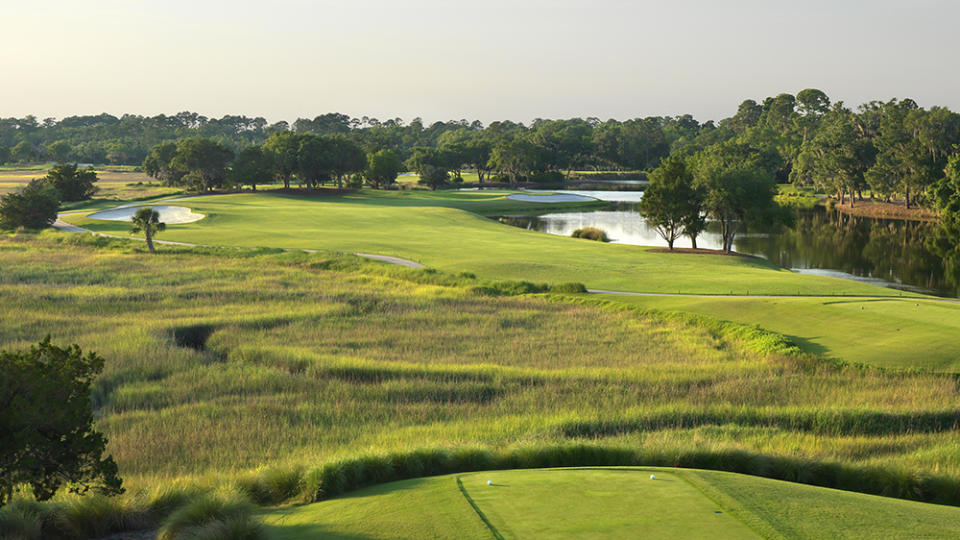
Evan Schiller
Sea Island is home to three diverse layouts, perhaps the most famous of which is the Seaside Course. No less an expert like Bobby Jones said the original design was among the best nine holes he ever played. More recently, Tom Fazio renovated the track and linked it to another 9-hole layout at the resort, thereby creating a championship course that hosts the RSM Classic on the PGA Tour every fall. Beyond tournament week, several PGA Tour players consider Sea Island their primary residence (or own second homes in the area), specifically for the quality of its golfing facilities, which is a pretty impressive endorsement.
Kiawah Island Golf Resort, South Carolina
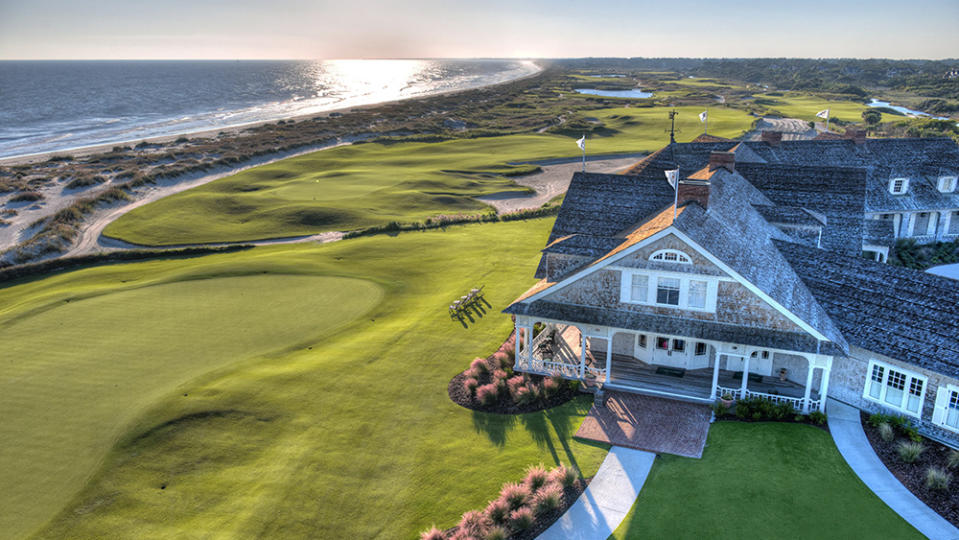
Steve Uzzell
The Ocean Course at Kiawah Island is one of five on the property, but by far it’s the drama queen. It played host to the contentious 1991 Ryder Cup—the so-called War by the Shore—Rory McIlroy’s eight-shot romp at the 2012 PGA Championship, which set a record for the largest margin of victory in that event, and 50-year-old Phil Mickelson’s unlikely 2021 PGA Championship triumph, which made him the oldest major winner ever. Despite all the on-course fireworks, Pete Dye’s seaside layout through dunes and marshes always grabs its share of the spotlight. And while the Ocean Course is bucket-list worthy, the property’s other four layouts—Cougar Point, Oak Point, Osprey Point, Turtle Point—showcase distinct aspects of the island’s various ecosystems and offer less intimidating challenges. Like a dedicated Marriott Rewards member, go for the Ocean and rack up the Points.
Silvies Valley Ranch, Oregon
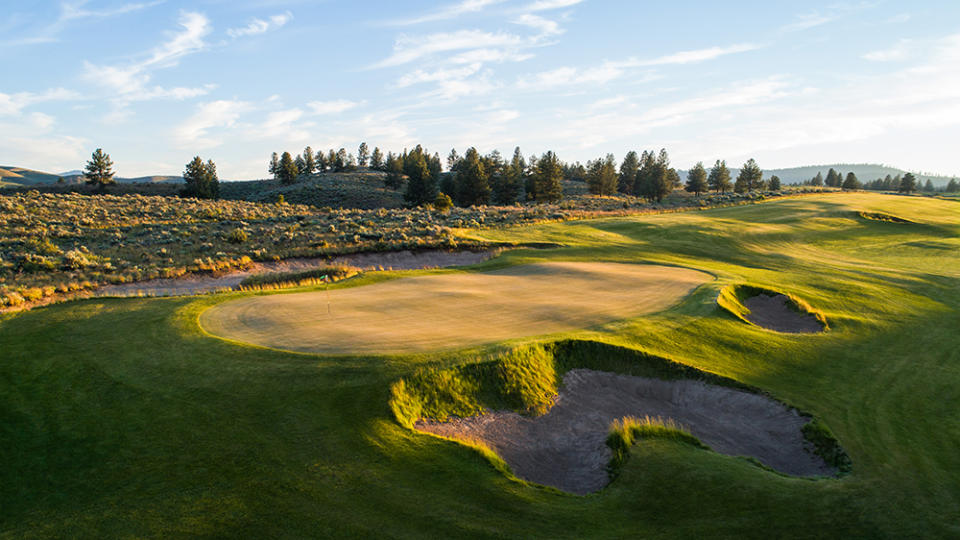
Brian Oar
Tucked away in remote eastern Oregon, Silvies Valley offers one of the more distinct experiences in golf, with goat caddies, a reversible course that plays in one direction one day and the opposite the next (there are actually 27 greens, so it’s not a strict reversal) and a quirky 7-hole, par-23 course so hard it might make you cry. Built in 2017 and set on a 140,000-acre working cattle ranch, the 18-hole courses, the Craddock/Hankins, boast wide fairways and large, firm greens with plenty of contours, which give everyday players a chance to post low scores. Then there’s the Gauntlet course, where designer Dan Hixson only cleared out areas for the greens and tee boxes, leaving the rest of the site’s sage brush undisturbed. You’ll never have so much fun posting a terrible score.
The Greenbrier, West Virginia

Courtesy of The Greenbrier
The Greenbrier is not of this time—in a good way. The West Virginia resort dates to 1778, and three of its four 18-hole courses are either past or very close to their centennial. Sam Snead was an assistant pro in 1936. The Greenbrier Course (1924) is the only course to host both the Ryder Cup and the Solheim Cup, but it’s not even the resort’s signature track. That honor goes to the Old White TPC Course (1911), which hosted a PGA Tour event from 2010 to 2019. It was originally designed by Charles Blair Macdonald and Seth Raynor, who incorporated iconic design features from historic Scottish courses, such as Prestwick, North Berwick and the Old Course. It’s one of those classic layouts on which, as the pros say, “everything is right in front of you,” even if its origins are in your rear-view mirror.
Big Cedar Lodge, Missouri

Courtesy of Big Cedar Lodge
Johnny Morris made his money selling boatloads of fishing gear (he founded Bass Pro Shops) and fostering an appreciation for the outdoors. So when he decided to bring golf to the Ozarks, Morris went big: He focused on incorporating the game into “the robust beauty of Mother Nature.” How robust? From one of the three 18-hole courses at Big Cedar Lodge, you can spot free-ranging bison. The other two, Ozarks National, designed by Coore & Crenshaw, and Payne’s Valley, the first public course designed by Tiger Woods, offer views of limestone rock formations, caves and old-growth forest. Jack Nicklaus laid out a par-3 course and Gary Player chipped in a 13-hole short course, too. Also, plenty of lakes and the White River run through and around the property if you want to bring that fishing gear.
The American Club, Wisconsin
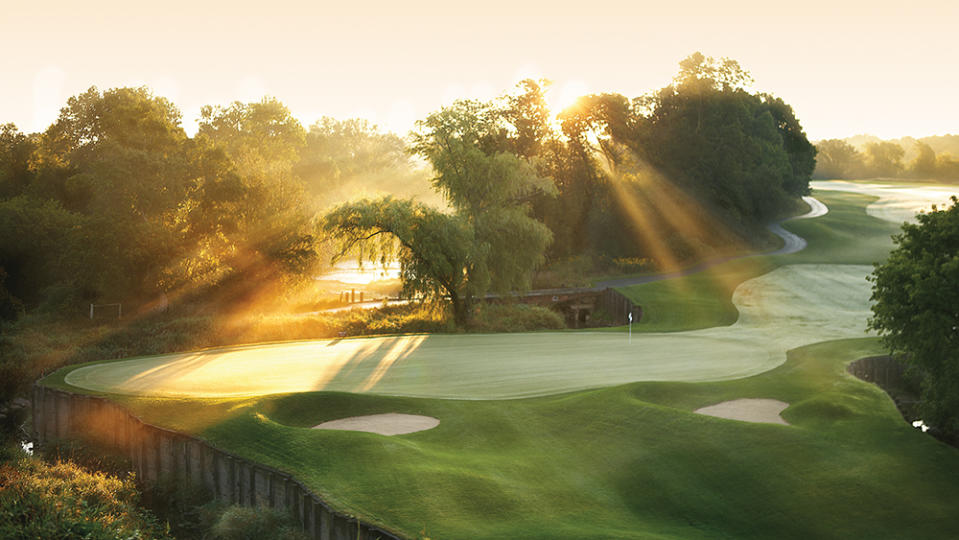
Courtesy of The American Club
Pete Dye courses, with their dramatic risk-reward setups and penchant for bunkers, tend to play well on TV, and the 2021 Ryder Cup was no exception. The event at times looked like one long ad for Whistling Straits, with the links-like layout sandwiched between blue skies and the waters of Lake Michigan—as long as you ignored that the players were wearing ski hats and mittens in September. The short season only means you should be proactive about setting up a summer trip because the American Club offers three additional Dye layouts—the Irish, the River, and the Meadow Valleys. The latter two parkland courses offer opportunities to swing away off the tee while the Irish, like Whistling Straits, runs along the lake. The “other” tracks may not have the same small-screen appeal, but enjoy them because Whistling Straits and its nearly 1,000 bunkers looks far less intimidating on a plasma screen than they do in person.
Princeville Resort Kauai, Hawaii

Courtesy of Princeville Makai Golf Club
While there are several exceptional golf destinations on the island of Kauai, the Princeville Resort stands out for two key reasons. First, its location on the north shore of the island, overlooking Hanalei Bay, delivers views that are as majestic as any vista on the island. Second, its Princeville Makai Golf Club, which was designed in the early 1970s by Robert Trent Jones Jr., was built before the entire Princeville community was developed, which means some of the most dramatic oceanfront real estate was reserved for fairways and greens. It’s a key reason why the course earned its name, since makai in Hawaiian means “toward the ocean.”
The Broadmoor, Colorado
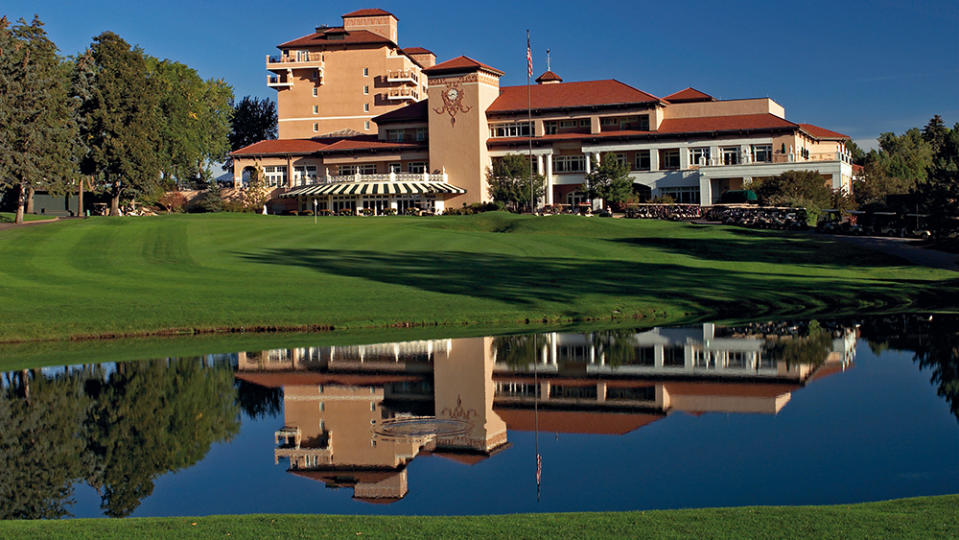
Dick Durrance II
Golf at the Broadmoor provides a mash-up of two of the game’s golden eras. The resort’s pair of courses is a marriage of holes designed by Donald Ross and Robert Trent Jones Sr. In 1918, Ross created an 18-hole course at the resort; however, that course was parceled and pieced together with two additional nine-hole layouts designed by Jones in 1964. The East Course, for example, features a middle 9-hole stretch designed by Jones Sr. and delivers incredible mountain views with challenging terrain from the first hole to the 18th—it was also the site of Jack Nicklaus’s first national title, the 1959 U.S. Amateur. The West Course also features a middle section of holes designed by Jones Sr. and is defined by tight fairways and plenty of dogleg layouts with spectacular approach shots. Like any good resort, the Broadmoor has hosted its share of weddings, but none were as sublime as this marriage of Ross and Jones.
La Quinta Resort & Club, California
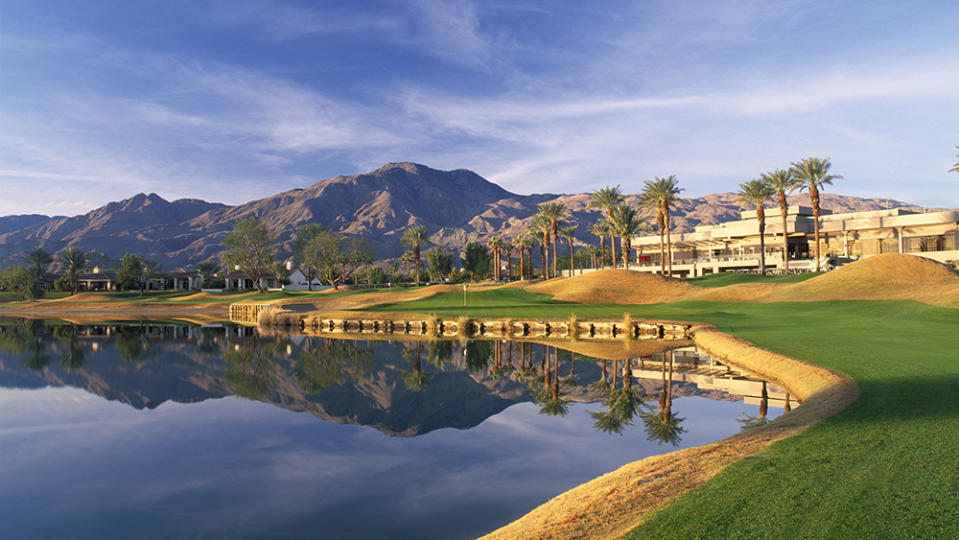
Rob Perry Photography
This Waldorf Astoria Resort property uses the tagline “play where legends played,” and it’s not hyperbole. The resort has hosted an annual PGA Tour event since 1960—first called the Palm Springs Golf Classic and now known as the Desert Classic presented by Workday—and its multiday pro-am event has drawn some of Hollywood’s biggest stars, including Bing Crosby, Frank Sinatra and Burt Lancaster (not to mention former US Presidents such as Dwight Eisenhower, Gerald Ford, Bill Clinton, and George H. W. Bush). With five courses—three designed by Pete Dye, as well as layouts created by Jack Nicklaus and Greg Norman—La Quinta Resort & Club offers a plethora of golfing options. The Stadium Course may be the resort’s top billing, but like so many of Dye’s championship layouts, it’s a serious test of golf. In fact, the revered course architect has said of that particular course that “love and hate can be found here.”
Sign up for Robb Report's Newsletter. For the latest news, follow us on Facebook, Twitter, and Instagram.